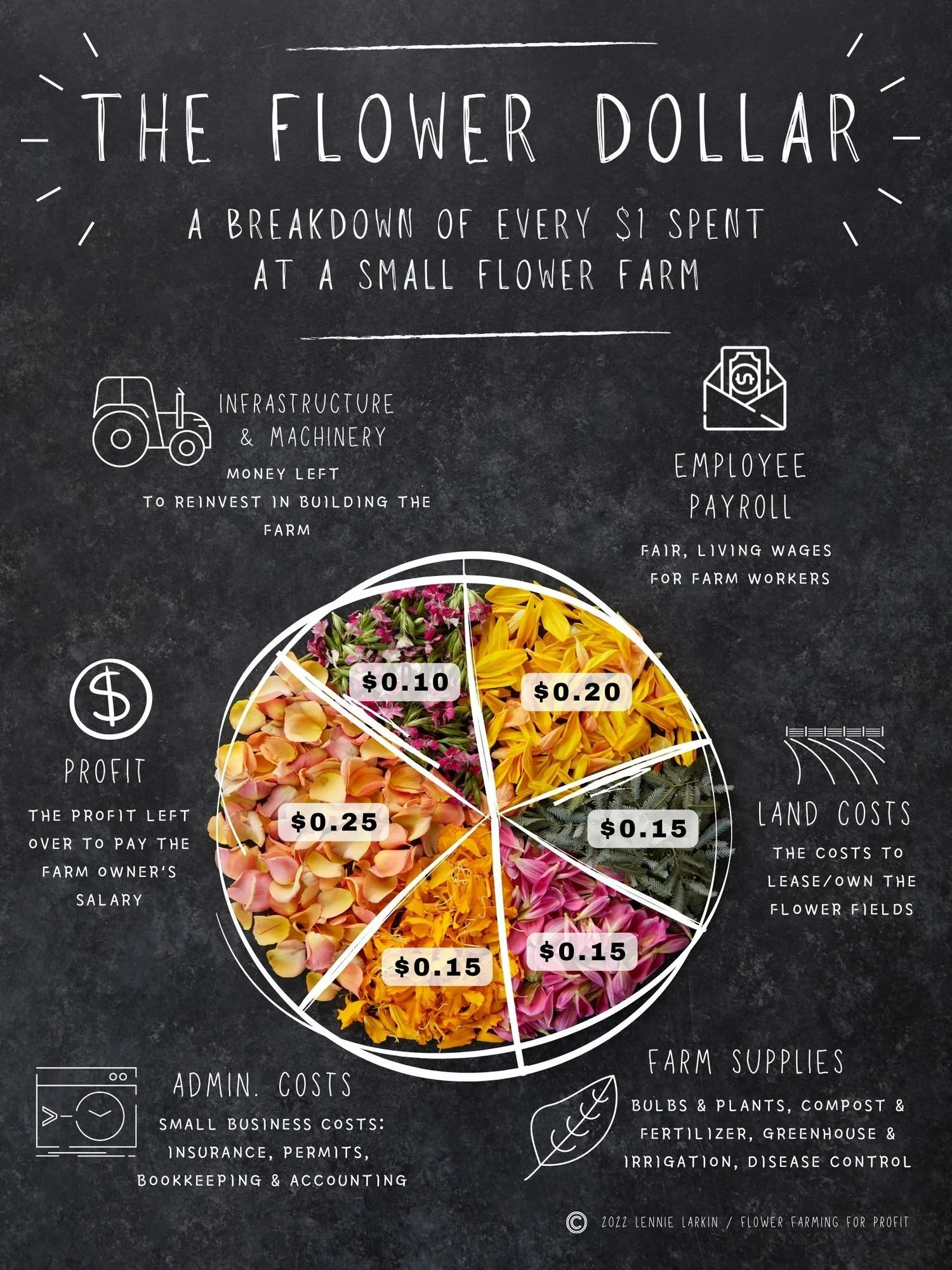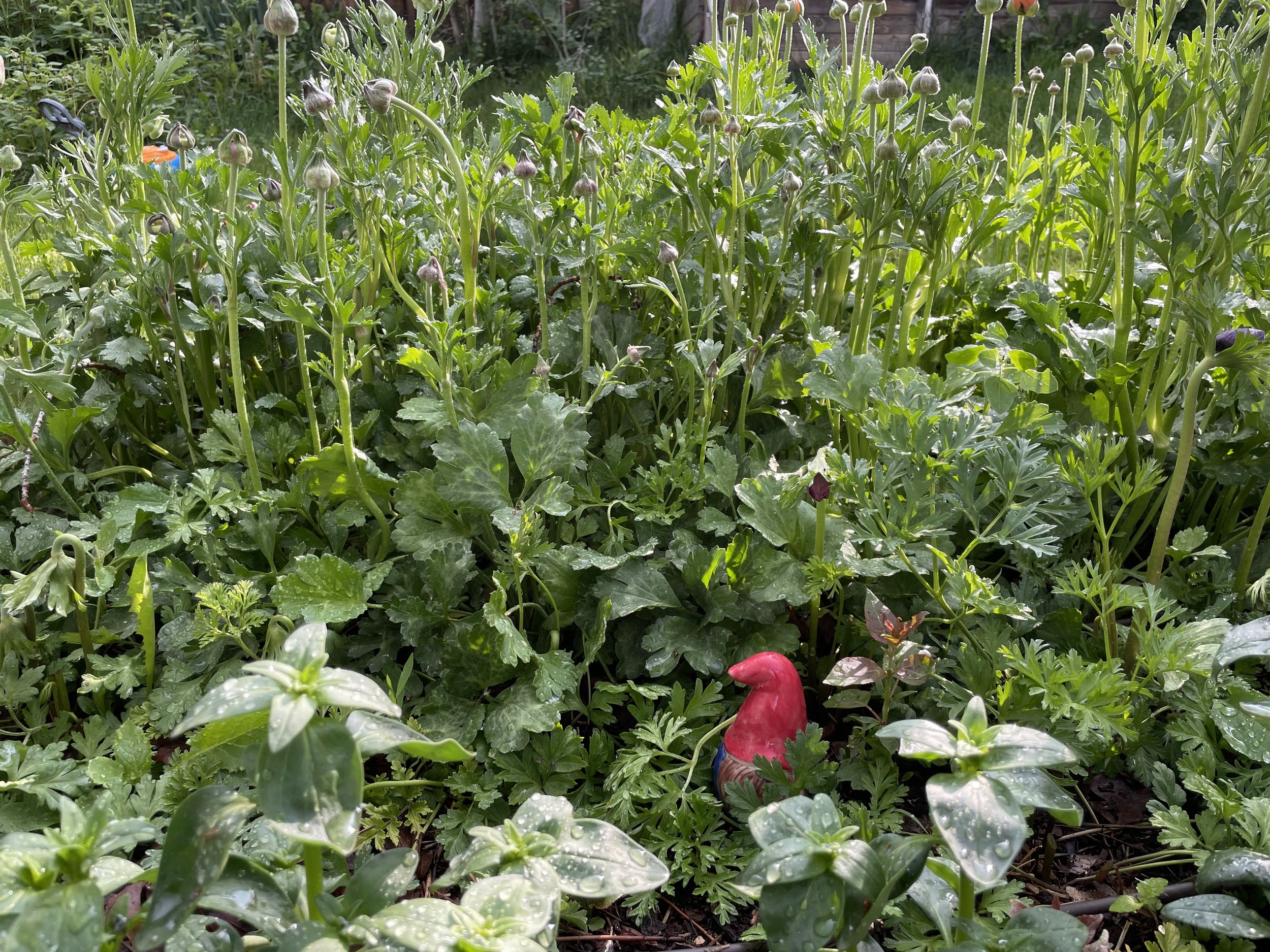Why Local Flowers?A 3 Part Series
Hello flower friend,
This is a three part series on local flowers. In Part 1, you’ll learn how the local flower industry has more to offer than internationally shipped in grocery store bouquets. In Part 2, I’ll go into why these local flowers cost more, but not to fear! In Part 3, I’ll give some actionable tips for how to make those local flower dollars go farther.
Part 1: Why Local Flowers?
Most people are aware of the environmental costs of large scale industrial agriculture for flowers, vegetables, and grains, but there are grimly ironic human costs to flower farming specifically. In an industry dominated by happy female customers, the field workers are often desperate young mothers in impoverished countries. And while flower farming didn’t create international poverty, many farms in Africa and South America take advantage of their workers’ situations to sell cheap flowers to America, Europe, and Australia (The real cost of a rose: Inside the billion-dollar global flower industry - ABC News ).
Agricultural workers are frequently sprayed with pesticides, despite company claims otherwise, and flower farms are allowed to use far more pesticides than vegetable farms, because flowers aren’t eaten. Disturbingly, the Western Hemisphere florists who handle these imported flowers are at a high risk of cancer since they are exposed both to the pesticide residue as well as to the chemicals that prolong the flowers’ life during shipping (Risk Assessment of Florists Exposed to Pesticide Residues through Handling of Flowers and Preparing Bouquets).
Flowers are used for our most emotional moments, whether happy or sad, and a disturbing back story doesn’t deserve any place at that table. Choosing local, organically grown flowers puts a story you can get behind into these important emotional moments. Flowers mean more when they were grown with fair wages and environmentally safe practices by a farmer whose name you know.
Maybe now you’re worried that I’ve ruined flowers for you. That’s the last thing I want to do! In these painful global issues where we often feel helpless, choosing local flowers is one small, good thing that we can put into the world. And if you want to buy flowers that come with a good story, but are worried about the price, check out Part 2 below. It’ll be awhile until the next soapbox, I promise.
Thanks for sticking with me.
Part 2: Why Are Local Flowers More Expensive than Trader Joe’s?
Let’s look at why a local flower bouquet costs $25, rather than $10-15. Lennie Larkin, author of Flower Farming for Profit, uses this pie chart above to break down every $1 paid to a small flower farm.
For every dollar you spend, 25 cents go to profit, and the rest goes to infrastructure, employee payroll, land costs, supplies, and admin costs. Like with every small business, the cost of production is higher on a smaller scale farm, even if costs like synthetic fertilizer and shipping flowers on a jet have been eliminated. It’s the economy of scale principle.
Trader Joes and King Soopers also keep between 20-28 cents for every dollar spent. (This is from a Google search of “2024 gross profit margins” for these grocery stores.) If you’re buying flowers at these stores, that 20-28 cents of profit that you give them isn’t going to the flower grower. If you buy local, it is. A common misconception is that local flowers’ cost is artificially high. After a closer look, we see that the percentage of profit for your local farmer is the same as the big stores, but the costs of production are higher due to the small nature of the business.
What are these costs of flower farming anyway? Isn’t that the farmer’s problem? It’s easy to vastly underestimate the amount of work and inputs that go into growing flowers. It’s way more than seeds! As a gardener, buying a pack of seeds for $3-4 and throwing them in your yard can get you some nice blooms on your table. However, a farmer needs consistency, predictability, and quality.
Fresh seeds, grown under lights with high quality soil is a must. It takes time and daily attention to keep these seeds alive over a month or more. And every seed has a different set of environmental requirements! When the weather warms, there’s spreading compost, transplanting, troubleshooting pest pressure, pinching, watering, and fixing irrigation equipment, just for a short list. When the flowers are ready months after seed sowing, the harvesting, conditioning, and arranging into bouquets requires time, skill, and necessary equipment and transportation. And finally, there’s year round overhead costs like website subscriptions, time spent marketing, or paying for help with taxes or accounting.
You can see that the costs of getting consistent, quality flowers into a sellable bouquet is much different than a home gardener’s experience growing flowers.
There’s a place for both for grocery stores and small farms, but I hope that knowing the cost breakdown of your local flower bouquet helps you feel like farmers use the money you give us with respect and diligence.
Now in part 3, we’ll look at ways to make your local flower dollars go farther. It’s our mission at Growing Good Farm to make local flowers accessible to a wide range of people, while staying in business!
Are you feeling lost in the weeds? Let’s talk about how to actually buy these flowers!
Part 3: How to Make Your Local Flower Dollars Matter
Flowers are often marketed as a luxury item. However, I want to propose that flowers are different than your usual luxury item, because they support the things humans do best– like loving, encouraging, and helping others. Flowers touch our hearts. A dollar spent on flowers that are used to express something of value, is a dollar that goes far.
Here are some examples from my life. I’ve only had local bouquets in my home a few times, but I have special memories of each one that made their cost worth it. In 2022, I bought myself icelandic poppies on my birthday, and I still remember the joy of watching the fragile petals unfurl in the summer sunshine coming through my kitchen window. It was my first birthday after my sister had died of cancer, and the flowers brought a sense of life that was very welcome.
In 2023, a dear friend gave me white peonies after the birth of my son. Smelling the fresh spring scent as I sat in the rocking chair holding my fresh spring born son was a gift I still treasure.
Finally last summer, when I mentioned to a local flower farmer that I had donated money to their charity bouquet program, he was so appreciative that he gave me one of their small bouquets. This unexpected gesture showed me this farmer’s heart. Their flowers weren’t just a commodity, and this donation program wasn’t for show. During the weeks when this small bouquet of snapdragons brightened my bookshelf, I saw more than flowers. I saw the meaning behind the months of this farmer’s work that had brought this flower from seed to stem. (By the way, all these examples are from the amazing “Ellen’s Flowers” in Canon City, CO.)
The local flowers I had in my home might have cost more than the grocery store, but the feelings they gave were worth much more. And it only took three over three years to give so much joy!
If you want flowers in your life, and you want to choose local, use flowers to make a bigger emotional impact so your dollars go farther. Here’s some ideas:
-Surprise a friend who needs encouragement.
-Mark a special event or a difficult anniversary with flowers.
-Use flowers when you’re looking for a gift.
-Choose to forgo some smaller impulsive splurges and make buying flowers a planned special event for yourself, whether that’s once a week, a month, or a year.
-If buying a bouquet is absolutely not possible, we always try to have a jar of free stems that were too short for bouquets. If you can get to the stand at Nightingale Bread on Saturday mornings this summer, make it an event, and bring your kids or a friend out to meet a farmer and take a free flower!
-You can always add on a donation of any amount to our Flowers for Good Initiative, so seniors at Summit Glen Retirement Living and visitors to the Salvation Army’s free lunch can feel the joy of flowers too. When we share flowers, that gives us something too.
Whenever and however you buy them, if you choose local, we want to honor your choice and your money, and help make your flowers mean something much more than luxury. We’re always open to suggestions and ideas on this topic, so if you see something we could do better here, let me know in person or via email!
Thanks for sticking with me through this 3 part series.
Your flower farmer,
Meredith


